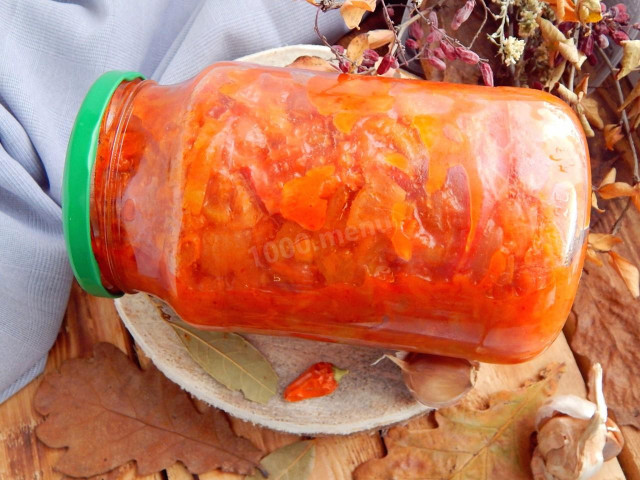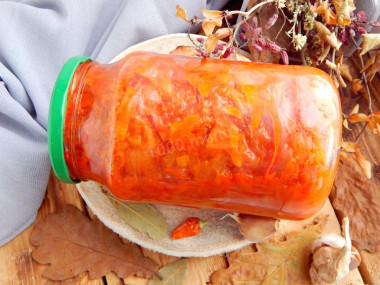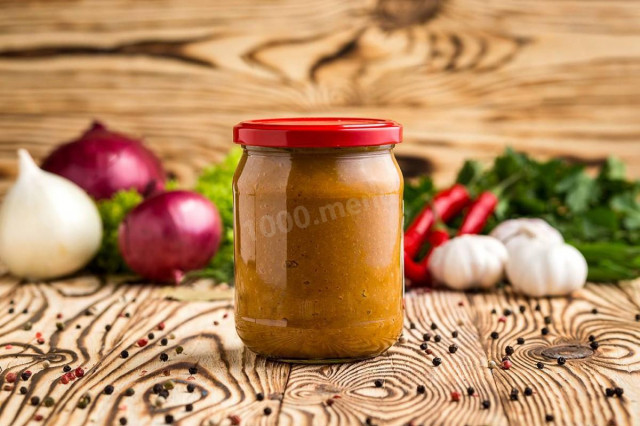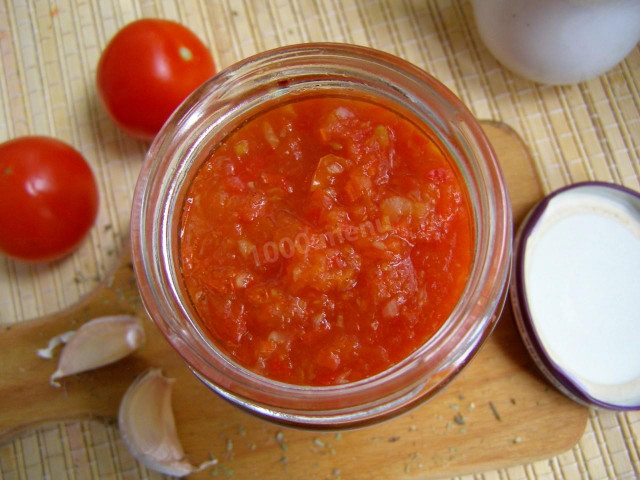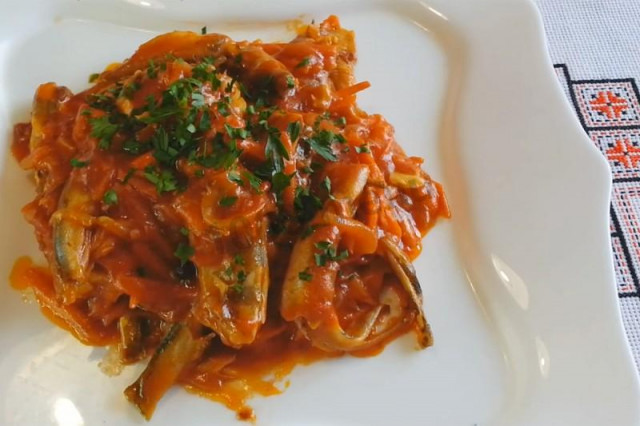Composition / ingredients
Step-by-step cooking
Step 1:

Tomato juice can be used ready-made from the store or self-made from fresh tomatoes. It is not difficult to make it from tomatoes. It is necessary to prepare well-ripe tomatoes for tomato juice. Tomatoes are washed under running water, we lower them into boiling water for a few minutes, then into cold water and carefully remove the skin with a knife. Cut tomatoes into several pieces.
Step 2:

We pass tomatoes through a meat grinder or a blender, knead them to a mushy state and obtain a homogeneous mixture in consistency. To avoid seeds in tomato juice, it can be filtered through a sieve. If the tomatoes are well ripe and soft, they can be crushed into a puree with a hand push.
Step 3:

Peel onions, cut into rings or halves of rings.
Step 4:
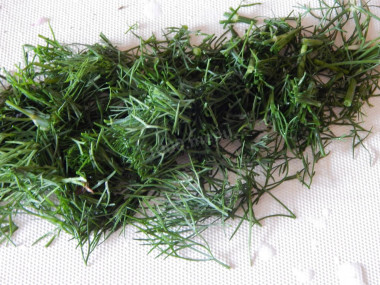
Fresh dill and parsley greens are washed, dried, thrown into a colander or spread out on a paper towel. Cut the greens into pieces about 2 centimeters long.
Step 5:

Bulgarian pepper is washed, cut into two halves, cut out the peduncle with the seed capsule, remove the white partitions. The pulp of Bulgarian pepper is cut into halves of rings or cubes. Bulgarian pepper should be fresh, only picked from the beds and juicy.
Step 6:

Carrots are washed, cleaned and grated. If the carrot is young, then it is enough to wipe it with a stiff brush, it is not necessary to clean it.
Step 7:
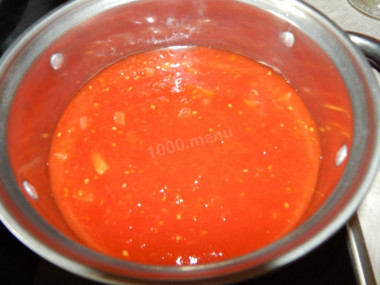
Put all the cooked vegetables and herbs in the tomato mixture. Put on the fire, add salt, sugar and vegetable oil. Bring the mixture to a boil, stirring constantly so that the mixture does not stick and does not burn to the bottom. When the mixture boils, reduce the heat to medium and cook the lecho for 10 minutes, stirring occasionally with a wooden spoon. Then pour in the vinegar, mix. Let the mixture boil again and immediately turn off the fire.
Step 8:

In advance it is necessary to rinse and sterilize the jars for the workpiece. You need to wash the cans with soda solution to remove all the dirt and degrease them. Sterilize the jars in a water bath, in a microwave or in an oven, or in another convenient way. We wash the lids and boil them, let them dry.
Step 9:
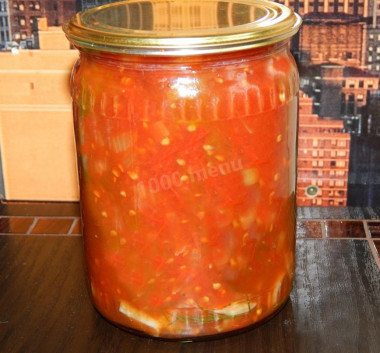
Fill the jars with lecho to the hangers. We roll up the jars with lids. Let them cool down upside down, under a warm blanket. We remove the workpiece for storage in the pantry. Bon appetit!
Caloric content of the products possible in the composition of the dish
- Tomatoes - 23 kcal/100g
- Sweet pepper - 27 kcal/100g
- Carrots - 33 kcal/100g
- Dried carrots - 275 kcal/100g
- Boiled carrots - 25 kcal/100g
- Parsley greens - 45 kcal/100g
- Dill greens - 38 kcal/100g
- Granulated sugar - 398 kcal/100g
- Sugar - 398 kcal/100g
- Vegetable oil - 873 kcal/100g
- Salt - 0 kcal/100g
- Onion - 41 kcal/100g
- Table vinegar - 11 kcal/100g

